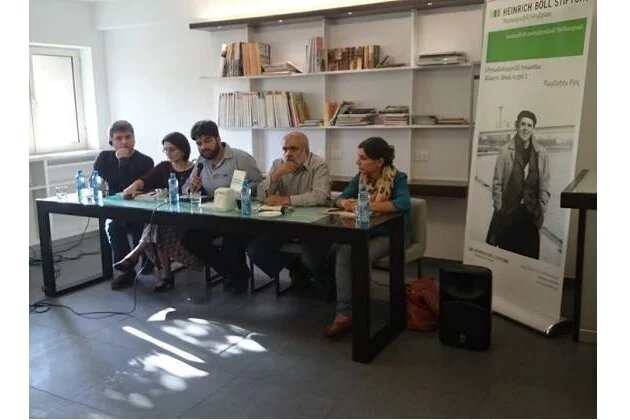
The volume’s name speaks for itself. South Caucasus at a Crossroad: Thorny Realities and Great Expectations celebrates ten years of the Heinrich Boell Foundation’s active presence in the South Caucasus. Those were a turbulent ten years for the region. Wars, conflicts and sealed borders remained part of the reality in the South Caucasus. Rather than serving as a crossroad of trade and cooperation routes, it was a crossroads of conflicts and clashing interests.
Conflicts and tensions were not the only things that made this a special time in the life of the complex and mosaic region that is the South Caucasus. This was also a time when states and societies were built, polities formed, lifestyles and worldviews drastically changed, and new identities constructed. Roles of actors within the region changed, and so did the place of the region in the global world. Some parts of the region came apart and some together within the paradigms of their political, cultural and even geopolitical development. Modernization and archaisation, divergence and globalization, internationalization and ethnisation, inclusion into global trends and marginalization – all these trends unfolded simultaneously and were, ironically, often synergetic, merging into one vibrant transformation process.
The authors and editors of this volume have made a conscious decision to avoid focusing on security and military politics. In the last ten years, a lot has been written about those topics, including specialized scholarly papers and media reports of varying quality. Meanwhile, the development of the South Caucasus has many other important aspects that are much less covered by media and researched by scholars. And even if we look at security, it is by no means isolated from the other trends existing in the societies, and is often impossible to understand without looking into societal development at grassroots level.
The authors of the volume’s papers have varied professional backgrounds ranging from academic scholars to journalists, from activists to politicians. This fact, alongside the variety of genres – academic papers, essays, journalism – places the content of the volume at a rather original angle. What the reader gets from reading this is a mosaic panoramic view of a decade of change and development. The dynamics of cultural trends, the unfolding of social processes, the mutually overlapping tendencies all reflect the varied composition of the region and the variability of development in the region as a whole and in each of its countries.
Overall, it is usually hard to make an external reader appreciate the heterogeneity of the South Caucasus in the many senses that this term has here: ethnic, cultural, linguistic, religious but also political and economic. A rather small region in terms of territory and population size, the South Caucasus is perceived from without as something whole, at least in a typological sense. A mere enumeration of languages, religions or political models will not give the external reader a genuine insight into the vast diversity that is so obvious to anyone living in Georgia, Armenia or Azerbaijan. By opting for a diversity of topics, styles and formats, the editors of this volume have done just that: enabled the reader to experience the endlessly surprising, variable and colourful world of the South Caucasus. I believe this to be the book’s main asset.
The format of a brief review does not leave me time to look at each paper separately. What I consider most important is that the authors do not just represent many professions, schools of thought and generations, but the geographical perspective from which they analyze events is also varied. Some authors are local experts who live in the South Caucasus, some have their roots here but live and work abroad, and some come from foreign countries but are currently living in the region and studying it. Finally, some papers were written by external experts who specialize on the South Caucasus. The polychromatic perspective that they offer the reader makes the volume a fascinating read.



